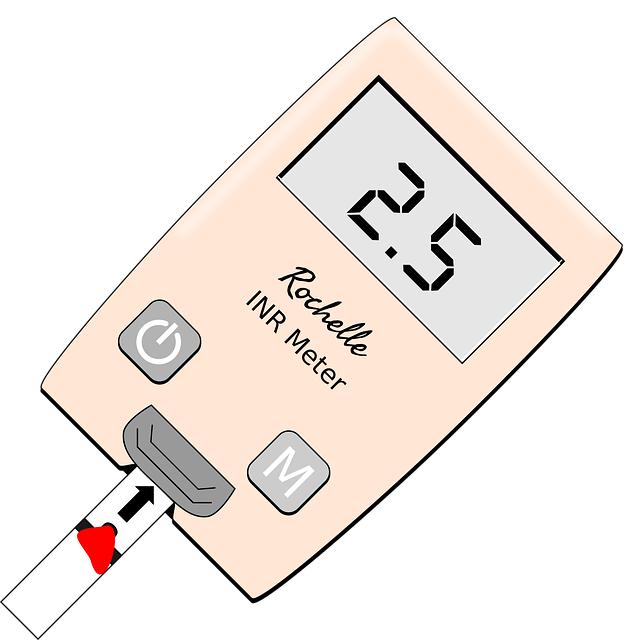The Ferritin Blood Test is a vital diagnostic tool for healthcare professionals in the UK, particularly in primary care, where it plays a key role in assessing iron levels and identifying chronic inflammation, liver conditions, and other health issues. Ferritin acts as a biomarker, with elevated levels suggesting inflammation, infection, or liver disease, among other potential health concerns. Accurate test results depend on strict adherence to protocols, avoiding factors like recent iron intake, and considering individual variability influenced by age, sex, and clinical context. In the UK's healthcare system, where chronic diseases are prevalent, this test is often integrated with broader diagnostic panels for liver function evaluations and inflammatory disease monitoring. Understanding ferritin's role in clinical diagnostics is essential for UK medical professionals to ensure accurate diagnosis, effective treatment, and enhanced patient care outcomes within the National Health Service (NHS) and beyond. Proper test administration and interpretation, guided by best practices and standardized protocols, are crucial for leveraging the Ferritin Blood Test effectively in managing iron-related disorders and improving overall health outcomes.
In the realm of clinical diagnostics, medical professionals in the UK play a pivotal role in interpreting and utilising liver function tests to manage patient health effectively. Among these tests, the ferritin blood test stands out for its critical insights into hepatic function, iron metabolism, and inflammatory responses. This article delves into the nuances of ferritin testing, elucidating its clinical significance and practical applications within primary care settings. From understanding ferritin’s role in liver health to grasping the best practices for conducting these tests, healthcare providers will gain essential knowledge to enhance patient care. Key considerations and interpretive guidelines are provided, emphasising the importance of this test within the UK’s healthcare infrastructure.
- Understanding the Ferritin Blood Test: A Comprehensive Guide for Medical Professionals in the UK
- The Clinical Significance of Ferritin Levels: Diagnostic Insights and Interpretation
- Practical Considerations and Best Practices for Conducting Ferritin Blood Tests in Primary Care Settings within the UK
Understanding the Ferritin Blood Test: A Comprehensive Guide for Medical Professionals in the UK

The Ferritin Blood Test serves as a pivotal diagnostic tool for medical professionals in the UK, particularly when assessing iron stores and detecting chronic inflammation or immune responses within the body. Ferritin, a protein complex responsible for storing iron, is indicative of a patient’s iron levels; elevated ferritin can suggest inflammation, infection, or a range of other health issues including liver disease, anaemia, and certain cancers. Understanding the nuances of interpreting ferritin levels is crucial for healthcare providers, as normal ranges can vary depending on age, sex, and clinical context. In the UK, where chronic conditions are prevalent, the ferritin blood test is often integrated into comprehensive diagnostic panels to aid in the management and diagnosis of these conditions. For instance, it is an integral component in the evaluation of liver function, given its role in iron metabolism and storage within hepatic cells. Medical professionals should be adept at correlating ferritin levels with clinical findings to accurately diagnose and treat underlying health issues. Moreover, the test’s ability to provide insight into a patient’s inflammatory status makes it an essential element in the monitoring of various inflammatory conditions and diseases. Accurate interpretation of ferritin blood test results requires a deep understanding of its physiological implications, which is why medical professionals in the UK must be well-versed in this aspect of clinical diagnostics to optimise patient outcomes.
The Clinical Significance of Ferritin Levels: Diagnostic Insights and Interpretation

Ferritin, a protein complex that stores iron in the body, serves as an indicator of iron stores and inflammation within the liver. The ferritin blood test UK is a critical diagnostic tool for medical professionals, offering valuable insights into a patient’s health status. Elevated ferritin levels can suggest a range of conditions, including chronic diseases like hepatitis or liver cancer, as well as infections and inflammatory disorders such as rheumatoid arthritis. It is also a reliable marker for assessing iron reserves, which are essential for haemoglobin synthesis and oxygen transport in the blood. Interpreting ferritin levels requires careful consideration of additional clinical data, as normal ferritin ranges can vary significantly between individuals, influenced by factors such as age, sex, and inflammatory states. In cases where ferritin is found to be abnormal, further investigation and appropriate medical intervention are warranted to determine the underlying cause and to manage the patient’s condition effectively. The ferritin blood test UK, therefore, plays a pivotal role in guiding clinical decisions, particularly when monitoring disease activity or assessing response to treatment in patients with chronic liver diseases or those experiencing systemic inflammation.
Practical Considerations and Best Practices for Conducting Ferritin Blood Tests in Primary Care Settings within the UK

In primary care settings across the UK, the ferritin blood test plays a pivotal role in assessing iron stores within patients, particularly in diagnosing and monitoring iron-deficiency anaemia and haemochromatosis. Practical considerations for conducting these tests include adherence to standardized protocols to ensure accuracy and reliability. It is imperative that healthcare professionals follow the established guidelines for blood sample collection and handling, as deviations can lead to misleading results. Timing of the test in relation to iron supplementation or treatment cessation is crucial, as these factors can influence ferritin levels. Additionally, patients’ medical histories, dietary habits, and any chronic conditions should be taken into account when interpreting ferritin levels, as they can affect the test outcomes.
Best practices for conducting ferritin blood tests in the UK primary care context involve a multifaceted approach. Firstly, utilising accredited laboratories that employ automated systems for the measurement of ferritin ensures high-quality results. Secondly, healthcare providers should be adept at explaining to patients the importance of fasting before the test and the timing of its administration to avoid confounding factors. Clear communication with patients regarding their symptoms, diet, and medication is essential for a comprehensive clinical picture. Finally, integrating the ferritin blood test results with other diagnostic tools and patient data can aid in making informed decisions regarding treatment plans and patient follow-up. Implementing these best practices facilitates accurate diagnosis and effective management of iron-related disorders within primary care, thereby enhancing patient outcomes.
In conclusion, the ferritin blood test emerges as an indispensable tool for medical professionals in the UK, offering valuable diagnostic insights into a patient’s liver health and iron stores. The comprehensive guide on understanding ferritin, its clinical significance, and the practical considerations for conducting these tests in primary care settings within the UK equips healthcare providers with the knowledge necessary to interpret results accurately and effectively. By integrating this test into routine practice, UK medical professionals can enhance patient outcomes and manage conditions such as anaemia and liver disease more proficiently. The ferritin blood test stands out as a critical element in the armamentarium of diagnostic tests available for healthcare practitioners, underscoring its importance in the UK’s healthcare system.
